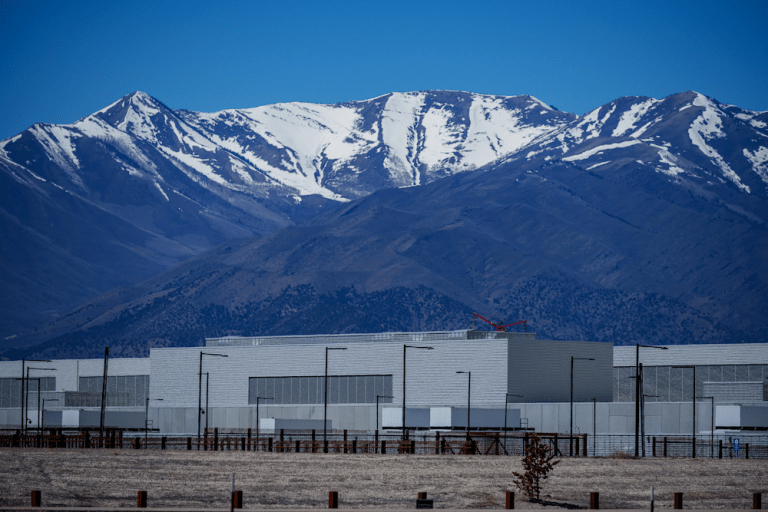 I made a mistake about the Boxer substitute for the Lieberman-Warner bill. Every year, it allows enough offsets into the market to cover 30 percent of the total quantity of emissions allowances. I had said it was 15 percent, which was a loophole the size of the Gateway Arch. How big a loophole is 30 percent offsets? Wait and see.
I made a mistake about the Boxer substitute for the Lieberman-Warner bill. Every year, it allows enough offsets into the market to cover 30 percent of the total quantity of emissions allowances. I had said it was 15 percent, which was a loophole the size of the Gateway Arch. How big a loophole is 30 percent offsets? Wait and see.
I had said the three offsets — domestic, international, and international forestry — could make up 15 percent of allowances because the WRI summary [PDF] says that “The combination of all three of these mechanisms is limited to 15 percent of total emissions allowances” and because when I read the actual bill (page 23), that’s what it seemed to say. But in fact we read it wrong. My apologies! What does this all mean?
It means we have now doubled the number of offsets, which would “involve substantial issuance of credits that do not represent real emissions reductions,” according to a recent analysis [PDF] by Stanford.
Now, when I redo the math, it seems the most likely outcome of this bill is that U.S. energy-related CO2 emissions in 2025 would be about the same as they are now, and possibly higher. If that’s the best we can do for a piece of legislation that’s deader than a dead parrot, why bother?
Redoing the math
 In 2025, there are 4,392 million metric tons of CO2 (MMTCO2) of allowances. That is a hefty 27 percent reduction from the current level, which is about 6,000 MMTCO2. It is an even bigger reduction (33 percent) from projected levels. Or it would be if the various cost-containment strategies didn’t provide a loophole the size of the Ring Nebula. (Note: That is the biggest loop I can think of that comes with a nice picture — I am open to other suggestions.)
In 2025, there are 4,392 million metric tons of CO2 (MMTCO2) of allowances. That is a hefty 27 percent reduction from the current level, which is about 6,000 MMTCO2. It is an even bigger reduction (33 percent) from projected levels. Or it would be if the various cost-containment strategies didn’t provide a loophole the size of the Ring Nebula. (Note: That is the biggest loop I can think of that comes with a nice picture — I am open to other suggestions.)
A full 30 percent of the allowances in 2025 can be covered by offsets, which is a stunning 1,318 MMTCO2 of allowances.
Given this wimpy bill, let’s assume a wimpy president sets the cost-containment minimum price in 2012 at the lowest possible price, $22/ton. That puts the auction price at $41/ton (inflation-adjusted dollars) in 2025, barely above the European price of CO2 today! No doubt the cost-containment auction will sell out. That is some 395 tons borrowed from the far future.
That means, effectively, the “cap” in 2020 is really 4392 + 1318 + 395 = 6105 MMTCO2 — higher than current emissions but lower than projected emissions.
That does assume there is no short-term borrowing, which could be another 659 MMTCO2, which means “allowed” emissions in 2025 would be above BAU. But that is, as I noted earlier, a very unlikely worst-case scenario.
In the real world, I would expect B-L-W as currently constructed to lead to neither its projected reductions by 2025 nor to BAU growth. From now through 2011, emissions would probably keep rising on their recent slow trajectory (because of high energy prices and perhaps lower than normal growth), taking us to maybe 6,150 MMTCO2 in 2011, at which time the cap sets in, and I would expect U.S. emissions to stop growing for a few years as entities began to adopt the very cheapest emissions reduction measures while canceling plans for the most expensive new carbon-intensive projects. Then, toward the end of the next decade, we’d probably start to see a slow decline — especially as some of the clean energy investments kick in. That should return us to around current levels by 2025. Still, I can’t see why we’d start to see really deep reductions until the late 2020s, when existing coal plants might start getting shut down and/or replaced with coal with carbon capture and storage.
Forestry: Some people have tried to lobby me on the benefit of the international forestry offsets, saying the provisions are very strong. Wonderful. I say let’s combine some of the regular auction money with that from other industrialized countries and stop deforestation in key countries. But let’s not allow existing coal plants — or, worse, new coal plants — to keep emitting for decades by coughing up a few bucks every year.
This post was created for ClimateProgress.org, a project of the Center for American Progress Action Fund.


